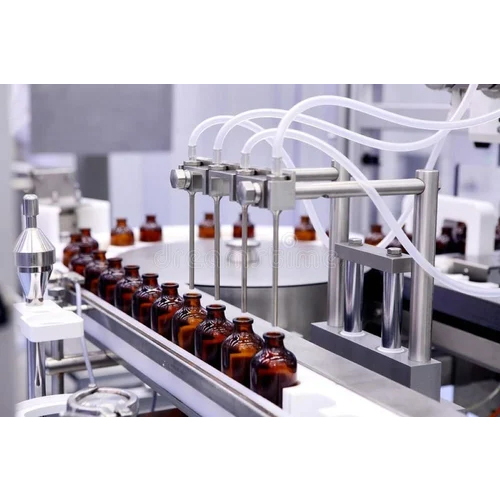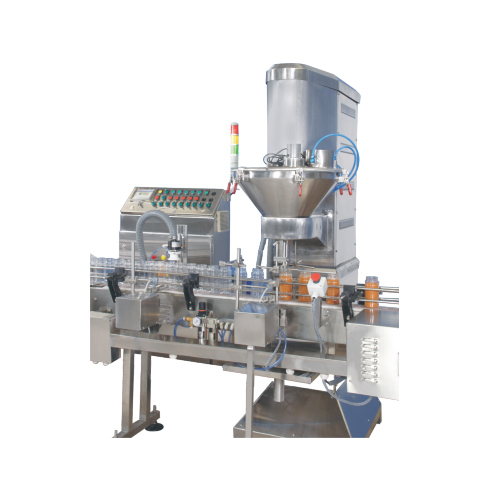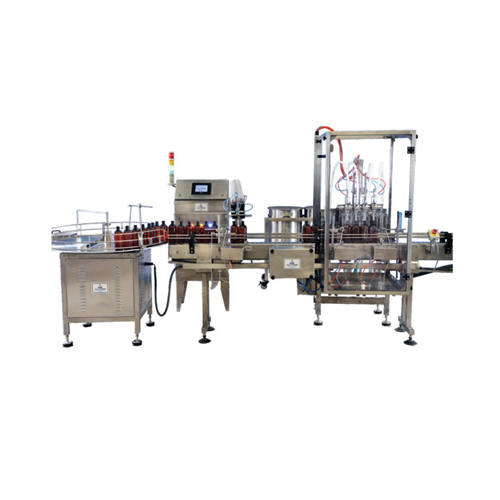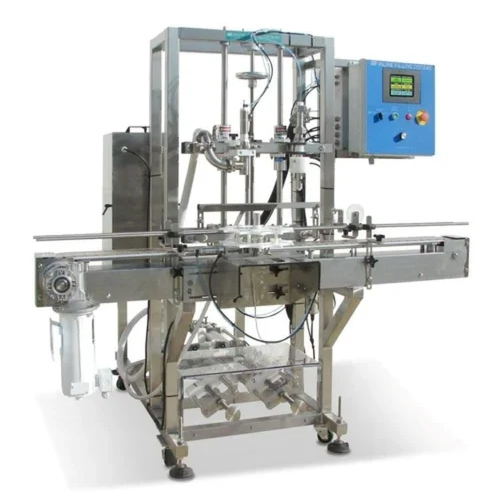Bottle Filling Machines
Product Details:
Bottle Filling Machines Price And Quantity
- 250000 INR/Unit
- 1 Unit
- 250000.00 - 300000.00 INR/Unit
Product Description
A bottle filling machine is a type of packaging machinery used to fill containers, such as bottles, jars, or containers, with liquid, semi-liquid, or powdered products. These machines are commonly used in industries such as food and beverage, pharmaceuticals, cosmetics, and chemicals. Here's an overview of bottle filling machines, including their types, components, and operation:
1. Types of Bottle Filling Machines
- Overflow Fillers These machines are suitable for filling containers with foamy or viscous liquids. The product is pumped into the container, and excess liquid overflows into a reservoir, ensuring a consistent fill level.
- Gravity Fillers Gravity fillers use the force of gravity to fill containers with liquid products. The product flows from a holding tank or reservoir into the containers through a nozzle, and the fill level is controlled by the product's weight.
- Piston Fillers Piston fillers use a piston mechanism to draw product from a reservoir and dispense it into containers. The fill volume is controlled by adjusting the piston stroke or cylinder size.
- Vacuum Fillers Vacuum fillers work by creating a vacuum in the container, which draws the liquid product into the container. These machines are suitable for filling delicate or foamy products.
- Pressure Fillers Pressure fillers use pressurized air or gas to force liquid products into containers. These machines are ideal for filling carbonated beverages or products that require a specific pressure during filling.
2. Components of Bottle Filling Machines
- Hopper or Reservoir The hopper or reservoir holds the product to be filled and supplies it to the filling mechanism.
- Conveyor System Conveyor belts or other conveying systems transport empty containers to the filling station and move filled containers to the next stage of the packaging process.
- Filling Nozzles Filling nozzles dispense the product into the containers. They may be single or multiple, depending on the number of filling heads.
- Fill Level Sensors Fill level sensors monitor the fill level of the containers and ensure accurate filling.
- Control Panel The control panel allows operators to set parameters such as fill volume, fill speed, and conveyor speed. It also monitors machine operation and provides feedback on performance.
3. Operation
- Empty containers are fed into the machine via the conveyor system.
- The containers are positioned under the filling nozzles.
- The filling mechanism dispenses the product into the containers, and fill level sensors ensure accurate filling.
- Filled containers are conveyed to the next stage of the packaging process, such as capping, labeling, or packaging.
- The machine may incorporate additional features such as capping or sealing units for a complete packaging solution.
4. Considerations for Selection
- Product Compatibility Choose a filling machine that is compatible with the viscosity, foaming properties, and chemical compatibility of the product being filled.
- Speed and Capacity Consider the required production speed and throughput capacity of the machine to meet production demands.
- Container Size and Shape Ensure that the machine can accommodate the size, shape, and neck finish of the containers to be filled.
- Automation Level Choose between manual, semi-automatic, or fully automatic machines based on the desired level of automation and operator involvement.
- Maintenance and Cleaning Select a machine that is easy to maintain, clean, and sanitize to ensure product quality and hygiene standards are met.
Bottle filling machines play a critical role in the packaging process by efficiently and accurately filling containers with liquid, semi-liquid, or powdered products. By selecting the appropriate type of filling machine and considering factors such as product compatibility, speed, and automation level, manufacturers can streamline their production processes and ensure consistent product quality.





